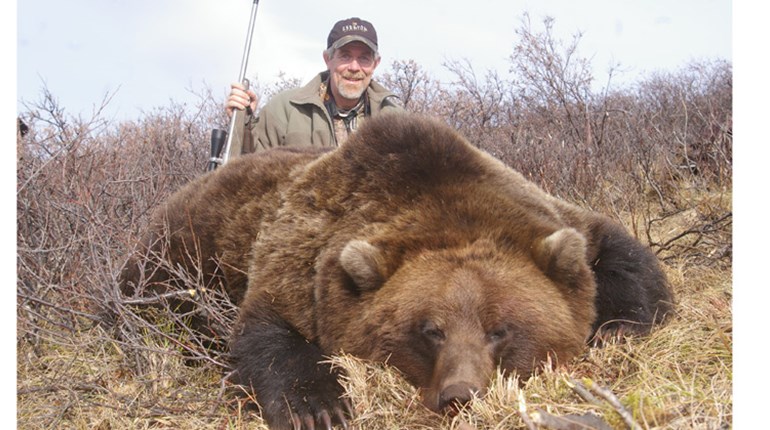
When weary and discouraged, elk hunters will tell you elk were “way over there” in the morning, “traveled to a remote ridge” at noon and “vanished over the backside” of a distant mountain by twilight.
No doubt elk are on the run during hunting season. They are mobile and adaptable animals that occupy a wide range of territory from above timberline in the mountains to desert valleys. But worn boot soles and studies show there is a method to elk movement as all elk seek certain types of topography and vegetation to fulfill their needs. Hunters can narrow their search for elk by focusing on their habitat and travel routes.
Find the Hideouts
Wildlife studies on public land stress the animals’ need for security. One study stated elk stay at least 400 yards away from roads open to vehicles at all times of the year. When hunters entered the woods that buffer increased, with some elk traveling more than 6 miles back into the mountains during the first days of hunting season. An Idaho study stated hunter success was much lower in country with high densities of open roads compared to land with closed roads or no roads. Even places with closed roads may hold few elk because roads crisscrossing the country allow easy access to hunters on foot, especially if extensive logging in these areas also has removed most concealing cover. Another Idaho study found elk require blocks of cover at least 250 acres in size and half a mile from any open road.
Elk on the lam seek particular cover. In Washington’s Cascade Mountains, cow elk holed up in mature semi-closed forests. Bulls preferred steep slopes. Males and females hid in the largest patches of unbroken timber available. Water nearby was essential.
Yet by early fall the plants beneath the forest canopy on south-facing slopes have dried out and provide little food for elk. In early fall, elk much prefer dense stands of spruce and lodgepole pine on north- and east-facing slopes of ridges with a little exposure to the sun. These thickets provide concealment, and the forbs and browse there remain green and moist late into the fall. Add a spring or stream for water and these hideaways are elk heaven.
But don’t overlook the obvious. A secluded niche that offers protection from the elements and hunters, and with food and water nearby, is all an elk needs to wait out the hunting season. These pockets might be as close as the edge of town or the next ridge over from a road that leads into the mountains. A study of elk movements during the fall in Montana’s Lolo National Forest discovered some elk, especially bulls, headed down in elevation to out-of-the-way places that held all of their needs within easy reach. One bull tracked during the study spent the entire hunting season within a mile of a house. Another bull lay under cover within rifle shot of a four-lane highway.
Mountain pine beetles have killed millions of acres of lodgepole pine across the Rocky Mountains. After a few years the dead trees start falling over to make a seemingly impenetrable mess. Studies of elk and hunter movements in Colorado and Wyoming found elk still used these forests of deep deadfalls. However, the crisscross of downed trees was a barricade to hunters and kept them on the fringes of the fallen forest.
A few years ago in late September, I hunted elk in Montana’s Scapegoat Wilderness. Pine beetles had girdled lodgepole pines for ridge after ridge. Forest fires added burnt timber to the tipped-over trees piled high as your shirt pocket. We rode out from camp well before daylight, and at midday temperatures reached into the 70s. We spent quite a bit of time sweating on the end of a saw clearing side-trails so our horses could pass. We rode back to camp after dark. Yet even with horses, we could cover only a portion of one mountain a day.
We finally found elk at sunrise the fifth morning. A bull bugled from the top of a mountain, then a second bull chimed in. We started toward the elk, climbing over the chaos of deadfalls. Sometimes, walking down logs one to the next was easier than climbing and continually getting jabbed by broken branches, so we were off the ground more than on it. I noticed elk tracks in the dirt and began to follow them. The tracks meandered here and there, but fairly well weaved around the worst deadfall. The trail also headed toward the elk.
The bulls started bugling to each other. I was pretty much between them. So I sat facing a lane through the trees. I mewed a single cow call. That really cranked them up.
The forest turned quiet. A black leg stepped out from the back of beyond where no man had ever gone. Another step and a 6-point bull stood at 20 yards. Its flanks glistened and its eyes bulged with a wild glare. The other bull bugled from back in the trees. The bull before me squinted to bugle a reply, and I aligned my rifle the last bit. The bull whirled at the shot and disappeared in a step. A thud of weight falling to the ground came on the heels of the rifle’s shot fading across the mountains. The bull lay dead next to a seep of water. The smell of its musk and salty blood mixed with the soft scent of the cool shade and ferns.
Focus on Forage to Determine Travel Routes
Elk really start moving with changing fall weather and as the hunting season picks up. A study in Wyoming found elk started migrating toward their lower-elevation winter range when snow depth reached about 8 inches. That usually occurred by mid-November. One mild fall and winter, though, snow failed to pile up and elk never moved to their winter range.
With a hard freeze then snow, elk switch to grasses and browse at lower elevations on open or west- and south-facing slopes. They eat bluebunch wheatgrass, bluejoint and Idaho fescue—if they feel safe.
Elk are constantly on the move in country of poor forage. Add hunting pressure, and it’s a long stretch between “here” to “there” for elk. Where elk are one morning will not necessarily be where they remain the next. But noting the direction of the flow of old and new tracks provides an idea where elk are headed.
One day I cut the tracks of a half-dozen elk inside the timber. The tracks stayed beneath the timber and showed where the elk had reached for moss hanging from spruce branches and chewed off the wire-like leaves of beargrass. Beargrass is poor forage, especially compared to the bunch grasses a short distance away in the open. But the elk skirted every opening as they climbed the ridge and went on over the backside of the mountain.
The next morning my son and I started toward the backside of the mountain. Higher up, quite a few old tracks ran through the snow. Most of them were headed down. Elk are aware the tracks they leave in the snow are a sign to predators, whether wolves, bears or humans. To hide their trail, elk will drop below the snow line. After half an hour of glassing, that’s where we spotted several cows in the thin timber. Thomas had a cow permit and took off slipping and sliding down the hill. I remained high, refusing to give up my hard-earned elevation.
An hour-and-some later, a shot summoned from far below. Thomas’ tracks gave out with the snow. A ways farther down the ridge he sat waiting on a stump. He pointed down into a thicket of short Douglas fir trees. “I was going out of the trees when the elk were coming in,” he said, “and that was that for a big cow.” We stood 4 miles as the crow flies from where I had hunted the previous day.
Step Then Fetch With Your Eyes
Many hunters head out for the day an hour or even two before dawn spreads across the foothills and forest. There is a risk of bumping into elk in the dark. But the night’s cold air flowing downslope keeps your scent behind you in a slim line. Keeping noise down to only your laboring breath also helps hide your approach. Likewise, keeping an ear cocked often reveals elk ahead. So it’s worth the gamble to reach parks and open ridges where elk are likely still feeding at the first hint of light. Hunted elk are nervous elk, though, and begin moving into the thick timber at daylight.
A number of years ago I started hiking in the dark before dawn. I stood at the edge of a park to catch my breath and heard the faint whine of a cow elk come from a bench above. I climbed a bit closer, then knelt in the sagebrush. Daybreak grew to reveal a dozen elk on the eastern horizon. At shooting light the elk started drifting toward the timber. A bull stepped out of the string. It turned downhill to run at the report of my shot, but after a few steps it staggered and then fell. That was a relatively easy elk. But the path to success is usually a long slog through the timber.
Sitting for a time at the edge of the open with a wide view helps muster the wherewithal required to head into the timber. My binocular is at my eyes while I sit, like untiring legs, searching the country for elk. The middle of open country receives a brief look, the edges of the forest and open ground get more scrutiny. These ecotones receive a mix of moisture and sun to grow the most palatable grasses and forbs, and elk linger there before heading into cover for the day. Elk you spot may be a long way off. But their location can be filed away for the evening or following morning.
One morning I finished a long climb up a mountain to reach the head of a park at first light. At least 20 elk had churned up the new snow where they had filed out of the park. The tracks were frozen, indicating the elk had passed at least several hours before. For 3 miles the tracks went straight up the mountain and over the top into a basin. The tracks finally started to meander and branch off in threes and sixes, signaling the elk were going to bed. I gambled and followed several large tracks that might have been bulls. I climbed over deadfalls the elk had jumped without touching the snow on the logs. Ever so slowly and quietly, I stepped into a thicket of short spruce. A cow elk stared from the other side of a log. It stood up and behind it three more cows stood up. The cows made a racket of breaking branches and thudding hooves as they cleared out. I sat to rest my weary legs and eat my frozen sandwich. I hiked a big circle around the basin and found only empty beds of elk that had moved on to God only knew where, because I had no wherewithal to follow them.
Determine the Destination
Elk follow the path of least resistance, although it does not appear so when your tongue is hanging out and you’re trudging along on their tracks. Elk stick to ridge tops and cross saddles in ridges and the heads of draws leading from one drainage into the next as they move through the country. To further conserve energy, they follow the contour of the land. These travel lanes stick to unbroken cover. Crossings are easy to find by noting contour lines on topographical maps and noticing trails and broken fences while hiking the hills.
Cows and calves file right along these trails. They do not linger, though, because danger has lurked there for eons. Mature bulls are even more wary. They shadow routes and crossings well downwind.
Last November my neighbor came along hunting. We stood on a ridge at the edge of a saddle that led out of a creek bottom below. “Elk cross here all the time,” I said. But the day was new and we continued hiking. After chasing phantom elk all morning, we walked back past the crossing to find tracks from six elk that had passed through the saddle. Off to the side in the spruce trees was a big set of tracks. A drop of sweat (maybe it was a tear) rolled off my face and landed in a print.
Knowing where elk have gone is well and good. But an idea of where they are headed leads to dead elk. When my cousins and I first started hunting elk, we pretty much wandered aimlessly around the hills. Step by step, we backtracked elk to see where they had come from and then turned around to find where they were headed. We finally pieced together the big picture: If a bull came out of a creek bottom “over there,” it crossed a certain saddle to end up “way over there.”
But we found purposely driving elk was a waste of time. Instead of following their natural path, terrified elk ran wild clear out of the country by the quickest route and through the thickest cover, and the country is too big to watch every back door. Only once elk have settled down after traveling a distance do they again follow established routes. So, if one of us headed into a certain creek bottom, the others hunted near saddles and draws leading out of the creek. My favorite was the thicket at the bottom of distant Airplane Park. Like the pilot who had crashed his plane in the grassland, you had to nearly kill yourself to get there.
On a bluebird afternoon, I sat on a log to rest at the bottom of the park. Presently, a couple of cows came trotting up through the deadfall. A bull brought up the rear. The elk had no idea danger was anywhere near. I tried to shoot the bull at 35 yards, but it was moving and trees kept blocking the view. As it passed I poked my rifle toward it and fired. The bull ran on with the cows. As if in spite, it used its last strength to run into the middle of the worst chest-high deadfall and die.
That experience was a classic example of a hunt done right. I had hiked far from road’s end to poke around edges of grass parks where elk prefer to feed at the first of day. As the day gained I hunted the thickets where elk travel and bed. Through the days leading up to the elk the hunting trail was puzzling at times, but there was never a hint of discouragement. But I was certainly weary after packing out the elk.






































